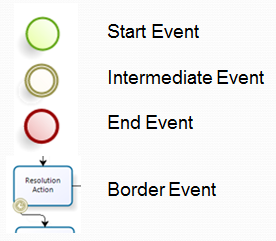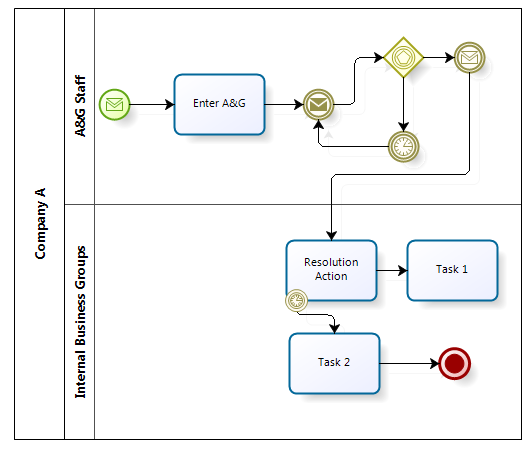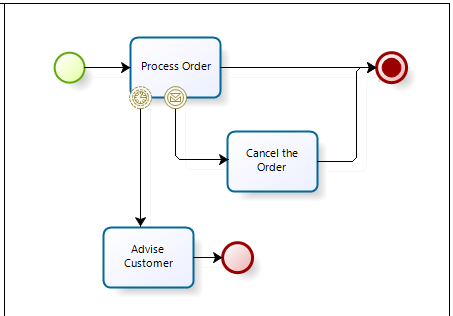Understanding and Using BPMN Events (1.1, 1.2 and 2.0)
In BPMN (business process model and notation language) events are expressed as circles. Events indicate when some event occurs at the start, end or during a process (as opposed to when some task or activity is performed). The following describes the types and attributes of events and then looks at some examples of events used in a p
ocess.
ocess.
Events that occur at the beginning of the process are called Start events – and every process starts with an event. Events that occur at the end of the process are called End events and every process has at least one end event. Events that occur in the middle of the process (between activities) are called Intermediate events.

Events can also occur during an activity. This is known as a Border event. For example you may be assigned a task with a deadline. The deadline would be shown as a time event on a human task activity.
To indicate the “type” of event, an icon is added to the center of the circle. This provides more clarification on what type of event the circle represents. For example – a circle with an envelope indicates a message event– this could represent the receipt of an email.
Events also have an attribute of catch or throw. This was added in the BPMN 1.1 version of the standard. This is indicated by the icon being solid(black) or empty(white). A message catch event would be an event “waiting” for a message to arrive and a message throw event would actually send the message out.
In the following example, the first event is a start event (message, catch). Upon receipt (catch) of an email, an instance of this process is started. Next an activity occurs to enter an A&G.

Once the Enter A&G task activity is complete, an intermediate event (message, throw) occurs. This event sends an email out. The process is now waiting at the event gateway for one of two possible events to occur. The path down from the gateway flows to an intermediate event (timer, catch). The process will wait a specified period of time – if the timer expires the process sends another email. If on the other hand a message is received back expressed by the intermediate event (message, catch) then the process will continue.
If we assume we received the message, the process flows to the Resolution Action. This action has a border event (timer, catch). So if the deadline expires, the task will flow to Task 2.
Another thing you notice in the BPMN notation is some events will have dotted lines. These represent the concept of interrupting and non-interrupting events. This concept was added in the 2.0 version of the standard. Meaning if the event occurs will the event interrupt the default flow of the process or not.
In the next example, the border event (timer, catch, non-interrupting) on the Process Order activity when triggered would create a new activity to Advise the Customer, however the Process Order activity would remain active. However, if the border event (message, catch, interrupting) occurs then the Process Order activity would no longer be active and the process would flow to and create the Cancel the Order activity.

For a side by side comparison of all the events and which BPMN notation version each event type is available in, check out the definition of BPMN in Wikipedia.
